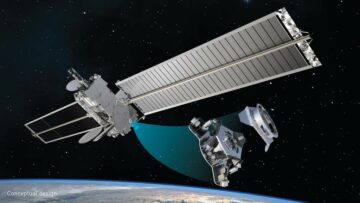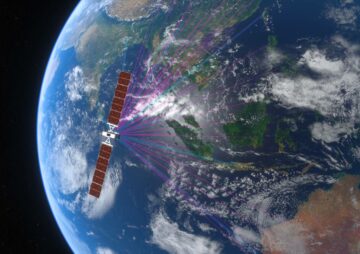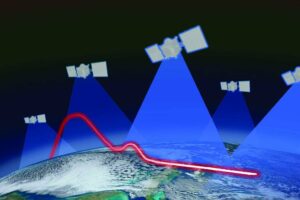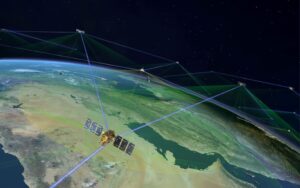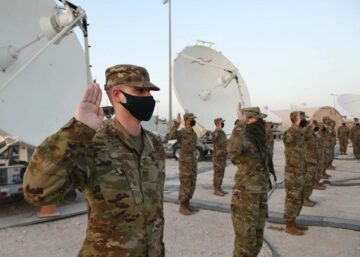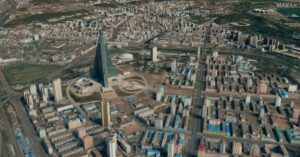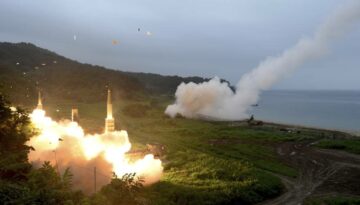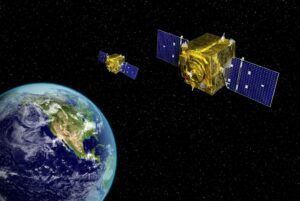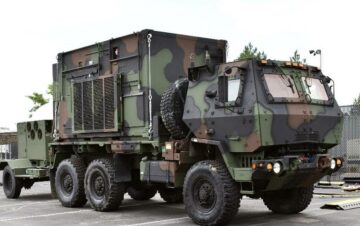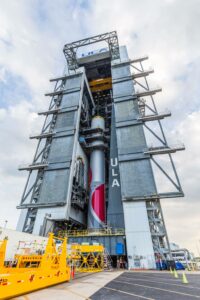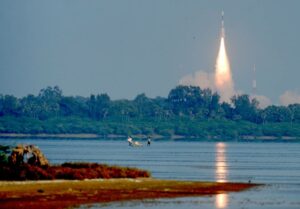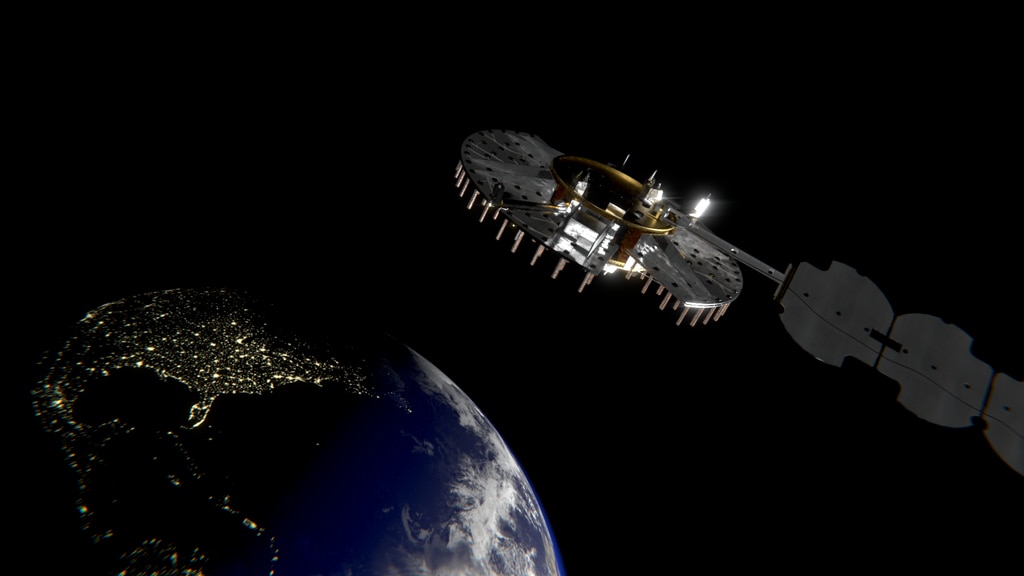
WASHINGTON — The Air Force Research Laboratory has pushed the launch of an experimental navigation satellite until next spring due to the delayed debut of United Launch Alliance’s Vulcan Centaur rocket.
Navigation Technology Satellite-3 was slated to fly at the end of this year on Vulcan’s first national security mission, USSF-106. However, Denver-based ULA announced that the milestone will be delayed well into next year as the company incorporates a fix to a testing anomaly discovered in March.
That setback will push the NTS-3 launch to May or June of 2024, program manager Arlen Biersgreen told C4ISRNET, noting that the lab is looking for ways to offset the impact of the delay.
“AFRL has started considering options for experimentation and test activities that may be able to be conducted in the additional time prior to the launch as risk reduction for the on-orbit demonstration,” he said in an email.
Biersgreen said ULA requested the date change late last month.
AFRL initially expected NTS-3 to fly in 2022, but delays to the USSF-106 mission pushed that timeline to 2023. As it awaits its ride to space, the satellite is progressing well through its integration and testing phase, Biersgreen said.
The L3Harris-built spacecraft represents AFRL’s first major positioning, navigation and timing, or PNT, demonstration in nearly a half century. The last NTS satellite flew in 1977 and showcased capabilities that proved integral to the GPS program.
NTS-3 comes amid growing concern that GPS satellites, which provide navigation and timing signals to critical U.S. infrastructure as well as military users, are vulnerable to signal jamming and other adversary threats.
AFRL hopes the experiment will kick-start a more regular cadence for these types of demonstrations. The spacecraft will test navigation capabilities that could augment the Space Force’s GPS satellites or support a future program. That includes technologies like steerable beams to provide regional coverage, a reprogrammable payload that can receive upgrades in orbit and protections against signal jamming.
Once NTS-3 is in orbit, AFRL will experiment with those capabilities over a one-year period, exploring how new satellite configurations could strengthen the Space Force’s PNT capabilities.
That work will inform an ongoing study by Space Systems Command, the service’s acquisition arm, into whether a mix of small and large satellites in multiple orbits could provide a more resilient capability for military and civilian users.
The satellite has already participated in military exercises, including the Army’s PNT Assessment Exercise last August.
Courtney Albon is C4ISRNET’s space and emerging technology reporter. She has covered the U.S. military since 2012, with a focus on the Air Force and Space Force. She has reported on some of the Defense Department’s most significant acquisition, budget and policy challenges.
- SEO Powered Content & PR Distribution. Get Amplified Today.
- PlatoData.Network Vertical Generative Ai. Empower Yourself. Access Here.
- PlatoAiStream. Web3 Intelligence. Knowledge Amplified. Access Here.
- PlatoESG. Automotive / EVs, Carbon, CleanTech, Energy, Environment, Solar, Waste Management. Access Here.
- BlockOffsets. Modernizing Environmental Offset Ownership. Access Here.
- Source: https://www.defensenews.com/battlefield-tech/space/2023/07/18/launch-of-air-forces-experimental-navigation-satellite-delayed-again/
- :has
- :is
- 10
- 2012
- 2022
- 2023
- 2024
- 70
- a
- Able
- acquisition
- activities
- Additional
- AFRL
- again
- against
- AIR
- Air Force
- air force research lab
- Air Force Research Laboratory
- already
- Amid
- an
- and
- ARE
- ARM
- AS
- assessment
- At
- AUGUST
- BE
- budget
- but
- by
- Cadence
- CAN
- capabilities
- capability
- Century
- challenges
- change
- comes
- company
- Concern
- conducted
- considering
- could
- coverage
- covered
- critical
- Date
- debut
- Defense
- delay
- Delayed
- discovered
- due
- emerging
- Emerging Technology
- end
- Exercise
- expected
- experiment
- Exploring
- First
- Fix
- Focus
- For
- Force
- future
- gps
- Growing
- Half
- he
- hopes
- How
- However
- HTTPS
- images
- Impact
- in
- includes
- Including
- incorporates
- inform
- Infrastructure
- initially
- integral
- integration
- into
- IT
- ITS
- june
- lab
- laboratory
- large
- Last
- Late
- launch
- like
- looking
- major
- manager
- March
- May..
- milestone
- Military
- Mission
- mix
- Month
- more
- most
- multiple
- National
- national security
- Navigation
- nearly
- New
- next
- noting
- of
- offset
- on
- ongoing
- Options
- or
- Orbit
- Other
- over
- participated
- period
- phase
- plato
- Plato Data Intelligence
- PlatoData
- policy
- positioning
- Prior
- Program
- progressing
- proved
- provide
- Push
- pushed
- receive
- reduction
- regional
- regular
- Reported
- reporter
- represents
- requested
- research
- resilient
- Ride
- Risk
- rocket
- s
- Said
- satellite
- satellites
- security
- she
- showcased
- Signal
- signals
- significant
- since
- small
- some
- Space
- Space Force
- spacecraft
- spring
- started
- Strengthen
- Study
- support
- Systems
- Technologies
- Technology
- test
- Testing
- that
- The
- These
- this
- this year
- those
- threats
- Through
- time
- timeline
- timing
- to
- types
- u.s.
- United
- until
- upgrades
- users
- vulcan
- Vulnerable
- was
- ways
- WELL
- whether
- which
- will
- with
- Work
- year
- zephyrnet

